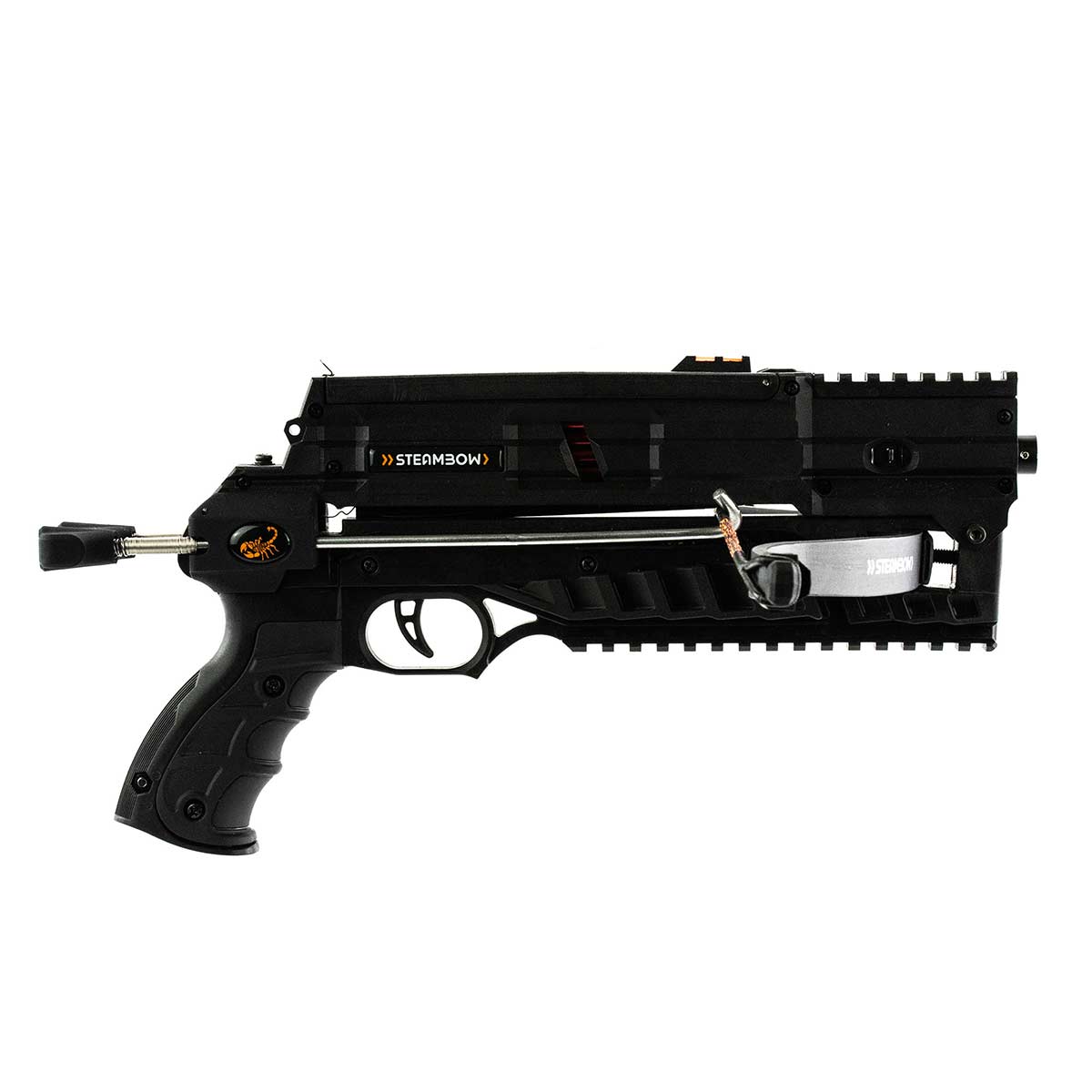
Basically, it’s not like a bow, and it’s not like a rifle.
Not enough detail for you? Fair enough: read on for a fuller response.
What is recoil like for different platforms?
With a vertical bow, you are the power source throughout the shot process. The energy your muscles exert is stored as potential energy in the limbs of the bow. When you release the string, that energy is transferred to the arrow, and off it goes. That makes you way more connected to the shooting process in terms of what it feels like. As such, when the bow tries to leap forward in your hand, when you release the string, it doesn’t come as a surprise.
With a rifle, all the energy is chemical, contained in gunpowder, and is far more powerful than anything a bow and string can produce. Anyone who has shot a centerfire rifle will know that you will experience a sharp recoil of the rifle moving in the opposite direction as the bullet it has just launched, i.e. back into your shoulder.
That recoil can be pretty stout if it’s a powerful cartridge or a light weapon, and that is one reason why having the buttstock firmly planted in your shoulder is important. There is also the flash and sound that heightens the experience. These can make the recoil feel even greater than it is.
What about crossbows?
Crossbows are a different experience. You put in the physical energy that you later get out by cocking the bow, but you might use mechanical aids to make that easier. In that respect, it’s like a bow. But you are not holding the string back. Once cocked, your strength is out of the equation. Then it’s more like a rifle, where you support the frame and concentrate on aiming and squeezing the trigger in the correct manner (although that is a topic for another blog to come).
What does that mean for recoil? It’s almost a combination of the two, especially with full-size, full-power crossbows. There is backward recoil as the crossbow pushes against the arrow it has just launched, but there is also a forward impulse as the limbs fully spring back to their resting position, and that momentum wants to pull the crossbow with it.
Does that mean they are hard to shoot?
Twice the recoil? Oh no! Well, actually, as there is a reaction occurring in both directions, the good news is that they sort of cancel out. Yes, you will feel a jolt because of all the movement, but it’s not as jarring as a rifle, which makes proper follow-through during a shot somewhat easier. And you will notice a degree of forward impulse as the arrow is fired, which you need to control so the crossbow remains aimed properly. Obviously, the more powerful the crossbow, the more you will feel these two impulses, but even the most powerful crossbow will not be trying to blast a path through your clavicle, nor will it try to rejoin the arrow downrange.
Steambow’s AR-6 Stinger II mag fed crossbows are very light, and that makes them a fair bit easier to control. With that said, we would not recommend a new shooter to go straight to the new MAGNUM or HUNTING limbs: those are very powerful and need a degree of experience.
The standard limbs you get in the Compact, Tactical, or Survival make for very pleasant shooting that will not alarm new shooters (and still deliver some pretty impressive results on target). This is an excellent way to ensure that a shooter is less likely to develop a flinch, such as we discussed in the Tips for better shooting blog. And once these draw weights have been mastered and the shooter has more hands-on experience, it will be easier to decide what higher draw weights may be interesting to expand into.
So all that to say, if you’re even remotely concerned about what recoil might feel like and whether the experience will be daunting for you or others in your family, you probably shouldn’t worry. The likes of a Tactical, Survival, or pistol-configured Compact repeating pistol crossbow are very reasonable introductions into the world of marksmanship and can also allow for developing good shooting form without the added distraction of the recoil and the noise.
They make a good precursor to actual firearms in many respects, as well as being excellent fun and a discipline to develop in their own right. They are also able to give the experienced crossbow shooter the challenge of constant improvement. Have a look in the webshop to see which would be best for you.






